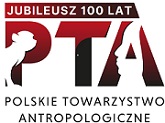Reconstruction of diet of population from Roman period (1st-4th c. A.D.) on Pruszcz Gdański cemetery material
DOI:
https://doi.org/10.18778/1898-6773.60.09Abstract
The cemeteries of the Wielbark culture in Pruszcz Gdański date back to the beginning of our era. Their location near the Baltic Sea suggests some connection with Germanic tribes. In an attempt to reconstruct the diet of the buried there, 182 bone samples were taken from 48 skeletons there and subjected to analysis for chemical elements. The data show the bone samples had a zinc-dominant microelement composition that has been also observed at Germanic burial places situated along the frontier of the Roman Empire. Our supposition is that the diet of the population was dictated by their customs rather than by the natural environment conditions there.
Downloads
References
Aufderheide A., C. Neiman, D. Lorentz, E. Wittmers, J. R. Rapp, 1981, Lead in bone II: Skeletal – Lead content as an indicator of lifetime lead ingestion and the social correlates in an archaeological populations, Am. J. Phys. Anthrop., 55, 285-291
View in Google Scholar
DOI: https://doi.org/10.1002/ajpa.1330550304
Aufderheide A., C. Angel, J. L. Kelley, J. O. Outlaw, A. C. Outlaw, E. Lorenz, 1985, Lead in bone III. Prediction of social correlates from skeletal lead contend in four colonial American Populations, Am. J. Phys. Anthrop., 66, 353-361
View in Google Scholar
DOI: https://doi.org/10.1002/ajpa.1330660402
Aufderheide A., 1989, Chemical analysis of skeletal remains, [in:] Y. M. Iscan and K. A. R. Kennedy (eds.), Reconstruction of life from the skeleton (ed. Alan R. Liss), New York: Inc.
View in Google Scholar
Bulow K., 1949, Enstehung der alluvialen Eiseners – lagerstatten Mecklemburg, Archiv für Lagerstättenforchung, Berlin
View in Google Scholar
Ernst F. J., 1966, Die vorgeschichtliche Eisenerzeugung, Mitteilungen des Bezirksfachausses für Uhr- und Frügeschichte, Neubrandenburg
View in Google Scholar
Gładykowska-Rzeczycka J. J., 1981, Anthropological structure of the Vielbark (Wielbark) culture population, [in:] Problemy kultury wielbarskiej (The problems of the Vielbark Culture), Słupsk, 163-181 (in Polish)
View in Google Scholar
Głąb H., K. Szostek, 1993, The heavy metal content of teeth in the Pomeranian hunters of the South Spitsbergen in the 18th century, [in]: Man in time and space (ed. J. J. Gładykowska-Rzeczycka), Gdańsk, 416-420 (in Polish)
View in Google Scholar
Jambor J., 1988, Changes in bones of prehistoric populations caused by environmental influence, Anthropologie, 26, 55-60
View in Google Scholar
Jambor J., V. Smrćka, 1993, Tin in human bones, Przegl. Antrop., 56, 151-156
View in Google Scholar
Klichowska M., 1970, Flora from Pruszcz Gdański (Roman Period), Pomerania Antiqua, 2, 283-286, (in Polish)
View in Google Scholar
Pietrzak M., 1970, Lime-kilns from the older Roman Period at Pruszcz Gdański, Gdańsk district, Pomerania Antiqua, 2, 267-282
View in Google Scholar
Przewoźna K., 1970, Roman imports in East Pomerania, Pomerania Antiqua, 2, 75-100, (in Polish)
View in Google Scholar
Przewoźna K., 1971, Settlements of the Late La Téne and Roman Period influence in East Pomorania, Pomorania Antiqua, 3, 163-277, (in Polish)
View in Google Scholar
Przewoźna K., 1974, Die Structur und die Besidlungswandlungen der südöstlichen Zone der Ostseeküste um den Ausgang des Altertums, Poznańskie Towarzystwo Naukowe, 8, 3-196
View in Google Scholar
Schindler R., 1940, Germanische Sidlungsfunde am Danziger Höhenrand, Burgundischer Eisenschmelzplatz in Klein-Kleschkau (Rużyny), Gothiskandza, 2, 44-55
View in Google Scholar
Smrćka V., J. Jambor, M. Salaś, 1988, Diet in the 1-2nd centuries along the Northern border of the Roman Empire (a reconstruction on the basis of an analysis of chemical elements found in skeletal remains), Anthropologie, 26, 1, 39-54
View in Google Scholar
Smrćka V., J. Jambor, 1993, Importance of chemical elements in human skeletal remains in the study of prehistoric populations, [in:] Man in Time and Space (ed. J. J. Gtadykowska-Rzeczycka), Gdansk, 342-346, (in Polish)
View in Google Scholar
Waldron H .A., 1981, Postmortem absorption of lead by the skeleton, Am. J. Phys. Anthrop., 55, 105-111
View in Google Scholar
DOI: https://doi.org/10.1002/ajpa.1330550313
Waldron A., 1994, Counting the dead, The epidemiology of skeletal populations, John Wiley and Sons, Chichester
View in Google Scholar
DOI: https://doi.org/10.2307/2532978
Wielowiejski J., 1981, Production, [in:] Prahistory of Polish Lands. La Téne Period and Roman Period (ed. J. Wielowiejski), Ossolineum, Wroclaw, 5, 314-334, (in Polish)
View in Google Scholar
Wołągiewicz R., 1981, Economic bases of the Vielbar culture population, [in:] Prahistory of the Polish Lands. Late La Téne Period and Roman Period (ed. J. Wielowiejski), Ossolineum, Wroclaw, 5, 135-191, (in Polish)
View in Google Scholar
Downloads
Published
How to Cite
Issue
Section
License

This work is licensed under a Creative Commons Attribution-NonCommercial-NoDerivatives 4.0 International License.








